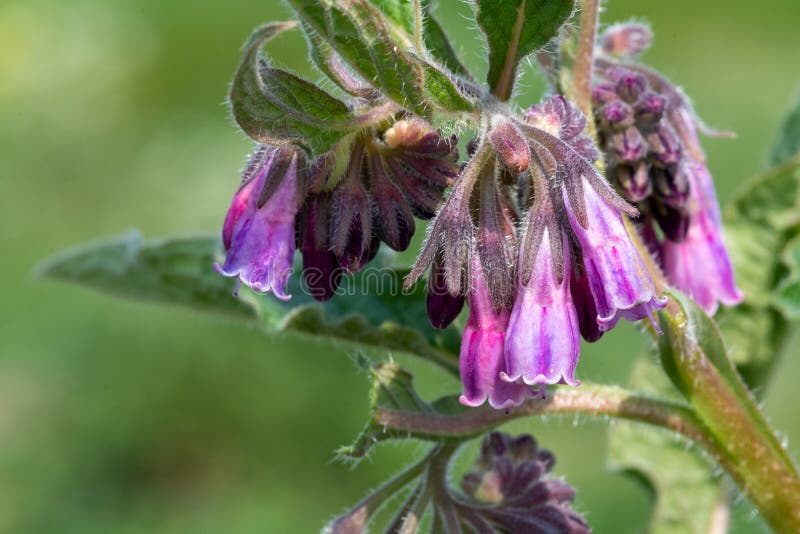

Would you like to grow food in your front yard without sacrificing curb appeal Check out my mini guide, The Permaculture Inspired Edible Landscape. Let’s take a minute to talk about the properties and uses for each. Specific epithet means sold in shops and was often applied to plants with supposed medicinal properties. True/Common comfrey (Symphytum officinale) Russian comfrey (Symphytum x uplandicum) also called the Bocking 14 cultivar. Genus name comes from the Greek words symphyo meaning to grow together and phyton for plant as the plant was believed to help heal wounds. Although some controversy still exists regarding internal use, plants are now generally considered by most experts to be unsafe and dangerous for ingestion. The plant (Symphytum officinale L) belongs to the family Boraginacea and has been valued in traditional medicine for its anti-inflammatory, analgesic and astringent properties. Leaves were also once used for herbal teas. For over 2,000 years, comfrey root and other parts of the herb have been used to treat a variety of ailments. Comfrey is also consumed as a vegetable and is one of the most popular herbal teas in many countries. Comfrey has been used as an herbal medicine for more than 2000 years ( Rode, 2002 ). Young leaves and stems were once cooked as a vegetable (like spinach). The pictures of comfrey (Symphytum officinale): (A) whole plant (B) comfrey roots. Internally, comfrey has been used to treat a number of other medical problems including ulcers and colitis. Leaves and roots have been used for many years in poultices for treating a variety of external inflammations, rashes, swellings, cuts, bruises, sprains or broken bones. Monastery Garden Herbs - Seed Gift Set with 11 Traditional Medicinal and Kitchen Herbs.

Over time, comfrey has naturalized along roadsides and in waste areas throughout much of the U.S. Symphytum officinale P 1 Ordinary Comfrey, Hardy, German Nursery Quality, in Pot for Optimal Growth. Comfrey cream cup organic sunflower oil cup organic safflower oil 2 cups organic, unrefined coconut oil cup organic, unrefined cocoa butter 1/8 cup comfrey tincture (Symphytum officinale), store bought or via. Immigrants first brought the plant to America in the 1600s for medicinal use. 1 ounce dried organic comfrey (Symphytum officinale) root 1 pint of 50 alcohol 1 pint-sized glass canning jar, with lid. Comfrey (also commonly called knitbone or boneset) has been cultivated since 400 B. Tubular, bluebell-like, white to pink to purple flowers appear in drooping clusters (scorpiod cymes) in mid-spring to early summer. Upper leaves are decurrent and much smaller than the basal ones. Large, pointed, hairy, ovate-lanceolate, dark green basal leaves grow to 8” long. Symphytum officinale, commonly called comfrey, is a large, coarse, tuberous-rooted, clumping perennial (to 3’ tall and 2.5’ wide) that is primarily grown today as an ornamental for its attractive foliage and spring flowers.


 0 kommentar(er)
0 kommentar(er)
